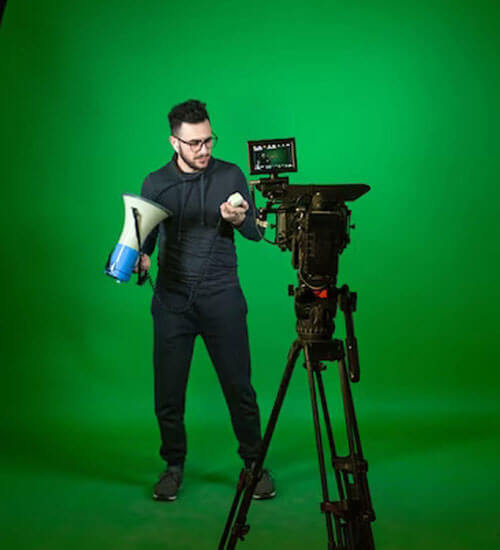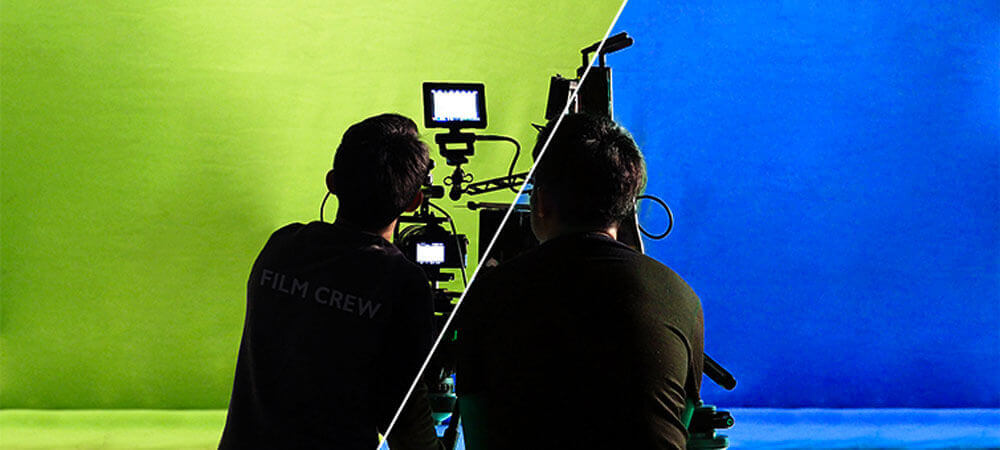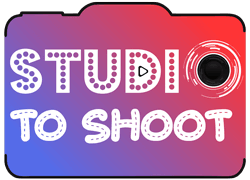Green Screen Shoot
Green screen shoot or blue screen shoot? Video shootings may be game changers for generating live-action projects with bespoke backdrops or for compositing in Hollywood-worthy special effects. Using a green screen, you may film a person or apply visual effects in front of a solid hue. Then, in post-production, you may plop that scene into the background of your choice by digitally eliminating or "keying out" that colour. The process of removing the coloured backdrop is also known as "chroma keying."
Why is there a green screen shoot? Because it doesn't match any natural skin tone or hair colour, it's simple to remove without snagging any of the person in the front. However, if you need to match a lower-light background or have a green prop in your project, a blue screen is the ideal option.

Proper lighting of your green screen shoot is essential for smooth "keying."
Shooting on a green screen might save you time and money, but it can also lead to additional effort if done wrong. To begin, ensure that your green screen is as level and smooth as possible. Then, focus on completely lighting your green screen. Shoot in high quality if possible.
Light your screen first, then your topic.
The most common error in green screen shoot is lighting the screen and the subject as one. Light your screen first for a colour backdrop or "chroma" that can be readily keyed out. "It needs to be as evenly lit as possible at about 40 to 50 percent luminance," explains Studio-to-Shoot owner. Aim for diffused, nondirectional illumination that falls from above on your screen. Simply lighting the space and screen will necessitate the use of many high-quality lights. Use a waveform monitor to measure the illumination on your screen; a flat line across the monitor indicates that the green screen is well lighted.
Your "green screen shoot kit" is not your ally.
Cheaper green screen kits available for purchase online will not suffice. These kits often feature one or two lights that are barely bright enough to illuminate your subject, resulting in a patchy background that is time-consuming and tough to erase in your video editor. "That kit appears to solve all your problems, but it introduces an entire world of new problems," owner of Studio-to-Shoot adds.
The greatest lighting for green screen film.
Studio-to-Shoot owner suggests hiring two 1000-watt lights for lighting the screen and a diffusing device, such as softboxes, to place around them. Next, obtain a 650-watt and a 500-watt light, both with diffusion using a softbox or even white bedsheets. These should be used to illuminate your video's subject. You may also use a hair light to draw a sharper line between your subject and the background. "As a beginner, renting that hundred or so dollars' worth of lights is worthwhile." "Making that decision will save your project," Studio-to-Shoot owner argues.
Getting your subject ready for the green screen shoot.

Knowing what kind of film, you'll use for your new background can help you determine how to light the items or people in front of your green screen. What kills a green screen composite is if there's sunlight from the left in the background shot and you lit them from the other side, explains owner of Studio-to-Shoot. It's impossible to make those two things seem correct.
Allow as much distance as possible between the person and the green screen.
Keeping your subject as far away from the green screen as feasible can help you replicate the lighting in your new backdrop clip more precisely. It will also assist to keep green tones from leaking off the screen.
It will also assist to keep green tones from overflowing off the screen and onto your subject's margins. Aim for a distance of 10 to 15 feet between your subject and the screen.
Remember that if it's green, it's going away.
If someone wears a green tie, the video editing software's Ultra Key tool will blast a hole through their chest. Look for hues with a tint of green as well. "I've seen people show up in slightly greenish khakis." "What happens is that they appear semi-translucent," Studio-to-Shoot owner explains. Mirrored or reflected things might also cause issues. Bring makeup powder to remove shine from the face or hair.
Studio-to-Shoot is perfect place for your green screen shoot. Explore your creativity here!
